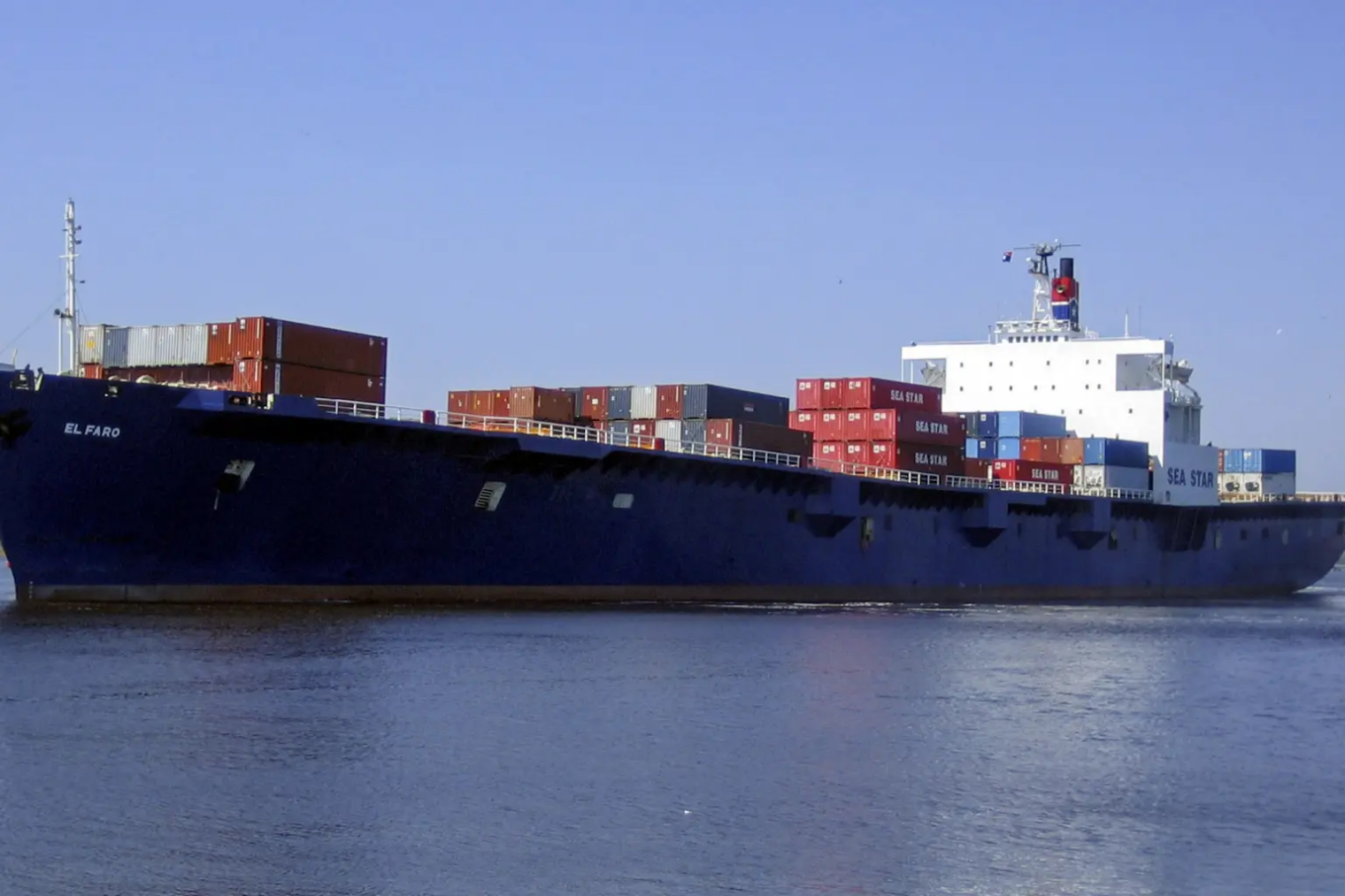A maritime safety lecture from Into the Storm: Two Ships, a Deadly Hurricane, and an Epic Battle for Survival by Tristram Korten…
SS El Faro’s hull, a towering wall of blue-painted steel, loomed over the wharf at the Port of Jacksonville’s Blount Island terminal as gantry cranes loaded her decks with cargo containers. She was a steamship (designated by the “SS” before her name), using two large boilers to power a single-propeller shaft. And she was old, built by the Sun Shipbuilding and Dry Dock Company in Chester, Pennsylvania, just south of Philadelphia, which rolled her into the Delaware River for service on January 1, 1975. That put her in the minority of big ships [in 2015]—less than 9 percent of the world’s merchant fleet is over twenty years old.
This doesn’t sound good for structural integrity:
Twenty years later, in the mid-1990s, she was hauled into a shipyard in Alabama, where her mid-body was lengthened to increase cargo capacity.
The 790-foot El Faro didn’t make it past her 40th birthday, sadly, but it turns out that she would almost certainly have been scrapped many years prior to the dramatic events of 2015 if not for U.S. laws to restrain maritime trade.
Sun Shipbuilding has since closed, a casualty of America’s decline in manufacturing, leaving a dwindling number of shipyards able to construct big cargo ships in the United States, which also means a dwindling number of shipyards capable of fulfilling the requirements of the Jones Act, a 1920 law requiring that any cargo transported from one U.S. port to another must travel on ships that are American built, American crewed, and American owned. (Puerto Rico, being a U.S. territory, counts as a U.S. port.) The law was designed to protect America’s supply routes during times of war. Today its primary effect is to protect the jobs of American sailors, preventing companies from hiring much cheaper crews from Third World countries. But there is a cost—and it is steep. To build a Jones Act ship costs $120 million to $140 million. To build the same ship in South Korea, which is a developed nation, would cost about $32 million, according to Court Smith, an industry analyst with Shipping Intelligence and Analytics. It’s even cheaper to build one in India or China. South Korea builds roughly two hundred commercial ships a year, according to Smith. America puts out maybe four. As a result, shipping companies pushed the life spans of their expensive American-made ships to the absolute limit. The average age of the U.S.-flagged cargo fleet is thirty-three years, compared to thirteen years for the global fleet, according to UN statistics, and most shipping experts say the average age a cargo ship is retired worldwide is around twenty years. El Faro was a product of this dynamic. Due to its age, it was allowed to remain outdated in certain areas. For example, a regulation requiring new ships to carry enclosed lifeboats was waived for older ones, for which compliance would require a costly retrofit. Grandfathered in, El Faro continued to carry two old-fashioned open-top lifeboats. Likewise, the ship’s emergency position-indicating radio beacon, or EPIRB, did not have to be encoded with GPS, which would give the ship’s position in a time of distress.
In addition to putting American sailors lives’ at risk, the Jones Act dramatically drives up costs for businesses and individuals in Puerto Rico, Alaska, and Hawaii. In addition to the obvious costs described above, there is the non-obvious cost that the closed market facilitates collusion:
For two decades, Sea Star had been one of several shipping companies that sailed supplies to Puerto Rico on a regular schedule. All that competition meant slender margins and low profits. But companies stayed with the route to Puerto Rico—travel between a U.S. state and a U.S. territory—because they had invested so much to comply with the Jones Act. There were no dodgy flags of convenience for El Faro; she flew the Stars and Stripes. That was a high barrier to entry for would-be competitors—they would need an American-built ship, crewed by U.S. sailors. Then, in 2002, one of those firms, Navieras, went bankrupt. Suddenly the companies still afloat—including Sea Star, Crowley, Trailer Bridge, and Horizon—started seeing increased business and profits for the first time in decades. Rather than risk losing their newfound earnings to any potential newcomers, the companies bought Navieras’s ships, and executives from at least three of the companies, Sea Star, Crowley, and Horizon, conspired to fix their prices. They created secret email accounts to communicate, and set up spreadsheets that kept track of their rates, which increased by as much as 30 percent—so that, as Forbes magazine wrote, “they could assure that nobody was cheating, while they were cheating.” They weren’t clever enough to fool the FBI, however, which got involved after learning of a meeting between executives from the competing firms.
Even a newly built South Korean ship would have had some trouble handling what the American captain and crew did with El Faro, but the new ship might not have sunk and, if it had, the modern lifeboats would have given the crew a chance to survive.

SS United States was viewed as the safest ship ever built, back in the good old days. At least modern Korean ships have guns to blow up the pirate ships. Pirates, viruses, food poisoning, engine failures seem to be the biggest problems, nowadays.
In case readers are children, or otherwise unaware of the “dramatic events of 2015”, and don’t care for Wikipedia, see the TV documentary series “Disasters at Sea”, S02E01.